The CVs of great artists are seldom studded with successes, and sometimes their failures are more consequential. If the young Théodore Rousseau had won the Prix de Rome in 1829, he would have travelled to Italy and probably returned as an academic painter of classical landscapes in the tradition of Claude. Having failed to win it, he travelled the length and breadth of France before settling at Barbizon near the Forest of Fontainebleau and becoming a progressive painter of nature.
Rousseau’s career path continued to be bumpy throughout his life. After early acceptance as a leading light of the new 1830s generation of Romantic landscapists, he spent his thirties as ‘le grand refusé’ before being welcomed back to a liberalised Salon in 1849 and appointed to the jury. In 1867, the last year of his life, he was promoted by the dealers Paul Durand-Ruel and Hector Brame in one of the first monographic exhibitions devoted to a living French artist. But in the light of Impressionism his restricted palette began to look old-fashioned, and he faded from view. The 1967 centenary retrospective staged by the Louvre was the last major survey of his work before the J. Paul Getty Museum’s collaboration with the Glyptotek on the current exhibition ‘Theodore Rousseau: Unruly Nature’.
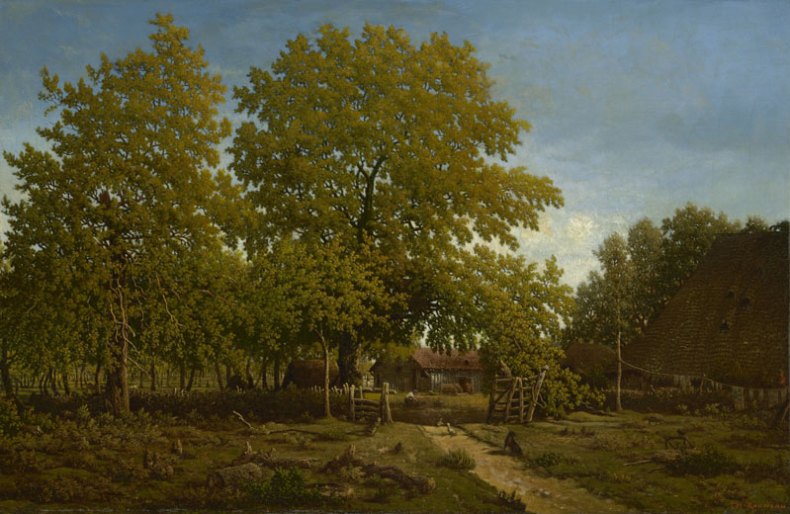
Farm in Les Landes (c. 1852-67), Théodore Rousseau. © Sterling and Francine Clark Art Institute, Williamstown, Massachusetts. Photo: Michael Agee
The 56 works on view cover the full span of Rousseau’s practice, confronting us with a dizzyingly varied array of drawings and paintings in graphite, charcoal, chalk, ink, watercolour and oil, executed on paper, panel and canvas. ‘Étude’, ‘esquisse’, ‘ébauche’, ‘tableau’ – many works seem to fit several categories, and none. Were they intended as sketches or underpainting? Finished or unfinished? Apparently no amount of prep was too much for Rousseau. His process is an open book, and to help us to read it the show’s designers have inscribed an alphabet of technical terms up the gallery stairs and provided a glossary on the landing.
Rousseau himself distinguished, at least in theory, between plein-air studies and studio tableaux. Still, one wonders how he would have defined Rainy Effect (1825/50), in which the exposed grain of the wooden panel completes the image. ‘A method matters little,’ he maintained, ‘one tries everything, even diabolical cunning’; yet his academic training asserts itself in his emphasis on draughtsmanship over colour. His atmospheric effects rely heavily on the multi-purpose brown paint known in French studio argot as ‘sauce’, used to deepen shadows but also to re-establish outlines of forms. Never a fair-weather painter – his plein-air season stretched into December – he favoured shade over sunlight, and even his ‘morning effects’ tend to feel fugitive. Although his focus on ‘effects’ sounds impressionistic, no Impressionist would have painted a forest scene like The Rock Oak (Forest of Fontainebleau) (1860–67) illuminated by just a few cracks of daylight. That took rock-solid drawing, and lashings of sauce.
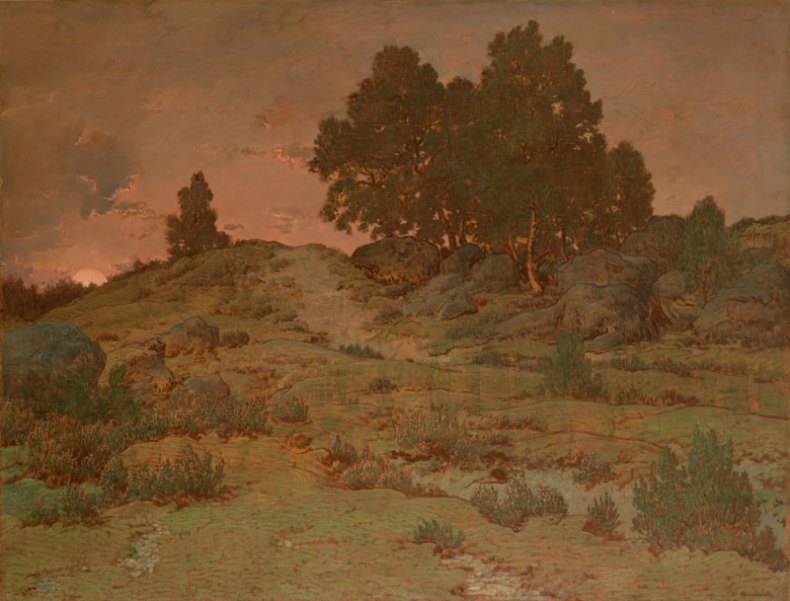
Sunset on the Sand Dunes of Jean-de-Paris (c. 1864-67), Théodore Rousseau. Wadsworth Atheneum Museum of Art, Hartford, Connecticut. Photo: Allen Phillips
The show’s non-chronological hang is a sensible approach to a perfectionist artist who often tinkered with the same painting for years. Farm in Les Landes (1852–67) was laboriously worked and reworked until its paint surface was compared to needlepoint by Alexandre Dumas, who lamented its loss of feeling ‘due to overthinking’. Rousseau was not always so retentive – the moody Hoarfrost (1845) was knocked out in eight days – but his tendency to ruin Salon submissions by fussing over them increased with age. His biographer Alfred Sensier claims credit for stopping his friend from obliterating the warm red underlayer that gives his late Sunset on the Sand Dunes of Jean-de-Paris (c. 1864–67) its magical glow.
Eight works in the exhibition, including four exquisite drawings, are from the Glyptotek’s own collection. Given its founder Carl Jacobsen’s aversion to Impressionism, it’s interesting that he should have purchased the half-completed The Gorges D’Apremont (after 1862), in which rough charcoal clouds drift across a painted landscape. One wonders what he would have thought of the acquisition in 1919, five years after his death, of the raggedly unfinished, monumental Mont Blanc Seen from La Faucille, Storm Effect, begun in the first flush of excitement following the 22-year-old Rousseau’s trip to the Jura Mountains in 1834.
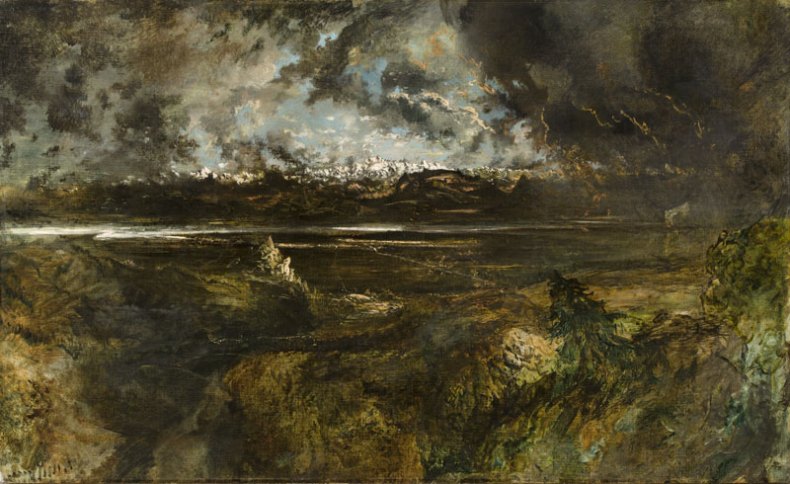
Mont Blanc Seen from La Faucille, Storm Effect (begun 1834), Théodore Rousseau. Ny Carlsberg Glyptotek, Copenhagen
A meticulous painting of the same view in placid sunlight from a second trip in 1863 hangs in a gallery with other late works, but the stormy early version has been taken out of its frame and put under the spotlight in a separate room. This extraordinary picture only came to light in the studio sale that followed Rousseau’s death; he had hung onto the canvas for 33 years, unrolling it from time to time to add further touches until the bituminous darkness that characteristically envelops his foregrounds spread to the middle ground and across the sky, leaving the snow-capped peaks to sparkle in the far distance like a cluster of jewels in a heap of coal. The resulting image encapsulates Rousseau’s belief that the purpose of depicting of objects in a composition is to contain ‘the echoes that they have placed in our soul’. It is the quintessential Romantic painting, but it is also the ultimate work in progress. Old-fashioned or modern? It’s impossible to say. With the unruly Rousseau, normal rules don’t apply.
‘Théodore Rousseau: Unruly Nature’ is at the Ny Carlsberg Glyptotek, Copenhagen, until 8 January 2017.
Unlimited access from just $16 every 3 months
Subscribe to get unlimited and exclusive access to the top art stories, interviews and exhibition reviews.

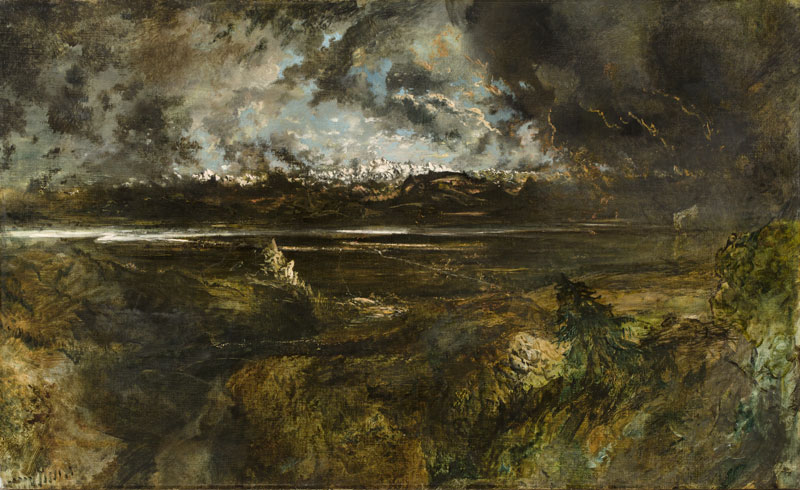
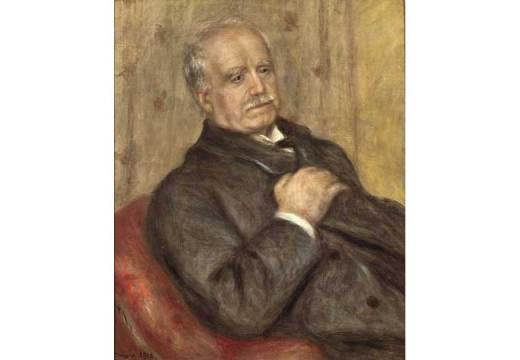
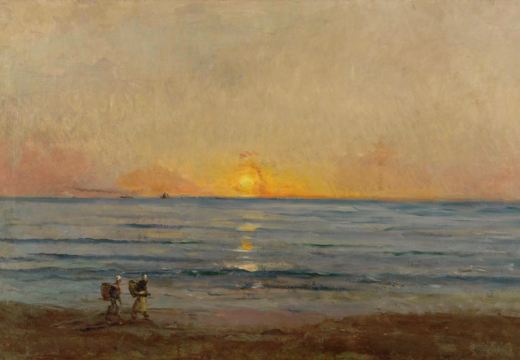
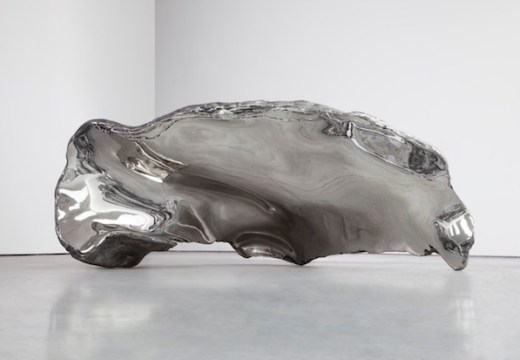









![Masterpiece [Re]discovery 2022. Photo: Ben Fisher Photography, courtesy of Masterpiece London](http://www.apollo-magazine.com/wp-content/uploads/2022/07/MPL2022_4263.jpg)
Why are fathers so absent from art history?